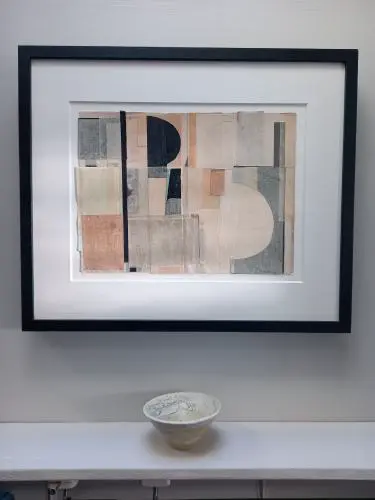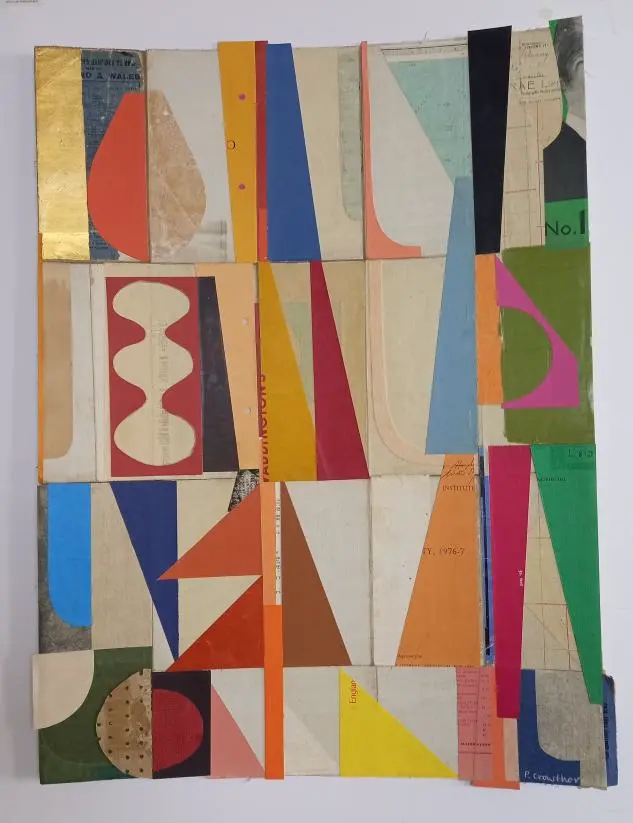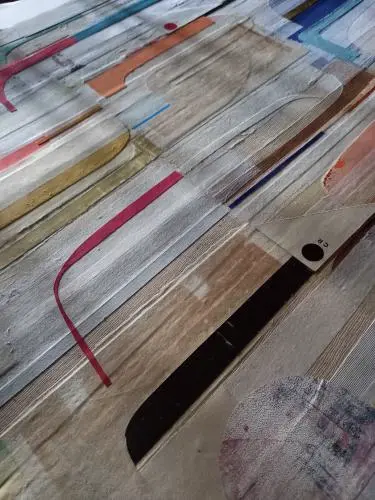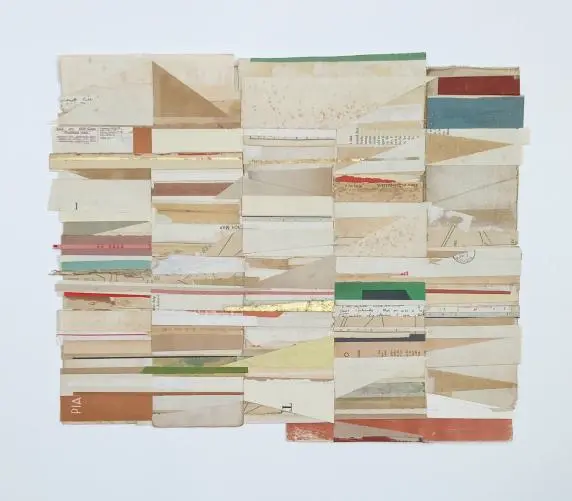The house is “overrun with foil bags and lists and more lists,” says Tricia Crowther, as she prepares for her upcoming exhibition at Bear Steps Gallery. Fresh from collecting professionally framed pieces from Bamber the Framer in Bishops Castle – “a real treat to not have to paint and assemble my own frames” – she’s in the final stages of preparation for what promises to be a captivating display of abstract works.
We caught up with Tricia ahead of her exhibition to discuss her creative process, her evolution as an artist, and what visitors can expect from this latest showing of her work. Her responses reveal an artist deeply committed to her craft, with a practice refined over four decades and a philosophy that embraces both constraint and spontaneity.
Four Decades of Mark Making
“I’ve been painting for nearly 40 years now,” Tricia reflects on her extensive artistic journey. “I don’t know what I’m going to paint, but as a contemporary abstract artist my process is mark and response and I have developed my own markmaking and a palette which I use repeatedly.“
This process, refined over decades, stems from her training at Winchester School of Art in the 1980s – “a very painterly place back then” – where she developed her deep connection to the physicality of paint. Her approach is deliberately unhurried, shaped by the practical realities of her chosen medium. “I paint in oils…and I’m particular about which brands I use too. I use traditional English turpentine and refined linseed oil so the drying times really do dictate the process.“
Rather than seeing this as a limitation, Tricia has embraced these constraints as an integral part of her creative philosophy. “I’ve learned to appreciate this time and recognise it as my thinking time. Making art for me, is about connecting hand, brain and eye…or seeing, thinking and making. Remove any of those stages and the work becomes merely decorative.“



The Seduction of Surface
Central to Tricia’s work is what she describes as a need to “be seduced by the surface of a work…its materiality and recognising the innate qualities of the medium.” This fascination with texture and physicality extends beyond her paintings into her more recent venture into collage – a medium that now comprises “easily half my output.”
The journey into collage began unexpectedly. “I started by making colour samples for a course I was teaching and then suddenly I realised there was more to this medium than just samples! Who knew!?“
Her choice of materials reflects her deep appreciation for history and narrative. “Vintage papers have a quality of colour and surface which I love. I also like the story behind the paper…it might be a handwritten address from the 1930s or someone’s treasured train spotting record.” She references Imtiaz Dharker’s poem ‘Tissue,’ noting how “papers tell us about someone’s life. Anyway, the life the papers have already had feeds the collages I make.“
Creative Discipline in Small Spaces
Tricia’s move to Shrewsbury three years ago brought unexpected changes to her practice. “When I moved to Shrewsbury 3 years ago, I lost my studio, but working from a small space in our house has meant that I am quite disciplined.“
This constraint has shaped her approach to materials in surprising ways. “People often assume I have drawers full of carefully sorted papers. Not so. I have one box. But that means I know every scrap. I find this productive. Editing out begins in the charity shop when I’m choosing materials. An essential part of the creative process for me.“
A Rich Artistic Heritage
Tricia’s work draws from a wealth of experience, including time spent in St Ives with its “rich artistic traditions” – a place that “still informs my practice.” Her achievements include winning the Pallant House Open competition, with work held in collections including the Isle of Wight, NHS Trust, and Hampshire County collections.
Her artistic philosophy centres on “abstract principles – line, tone, colour, rhythm, pattern and the like.” She describes her process as creating “a visual assonance or dissonance – indeed this imbalance is absolutely necessary to achieve a finished work.” It’s taken years to develop what she calls her “own voice which feels authentic and not a pastiche of other artists.“
What Awaits at Bear Steps
Visitors to the Bear Steps Gallery exhibition can expect to see evolution in action. “I have several new collage pieces which haven’t been shown before. And there’s a lot of bright colours which is a new thing for me.“
This represents a departure for an artist whose “work can be quite subtle,” and who notes that “folk often remark that they are surprised at the detail in the textures.” The exhibition promises to reveal new facets of an established practice while maintaining the deep engagement with surface and materiality that defines her work.
“I’m really looking forward to seeing old friends and meeting a new audience in the lovely Bear Steps Gallery,” she says, as Saturday evening’s hanging session approaches, ready for the 10am Sunday opening.
The exhibition opens Sunday, 3rd August at 10am at Bear Steps Gallery, Shrewsbury. It finishes on 16th August.

